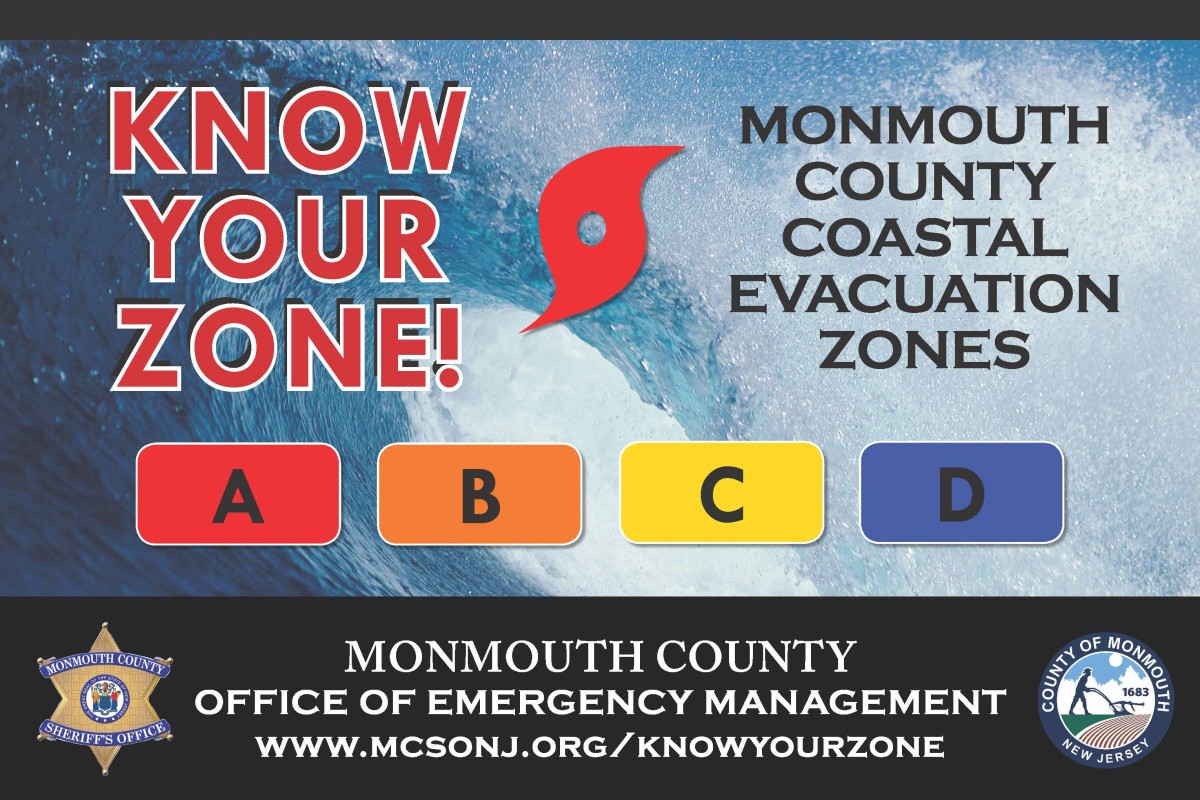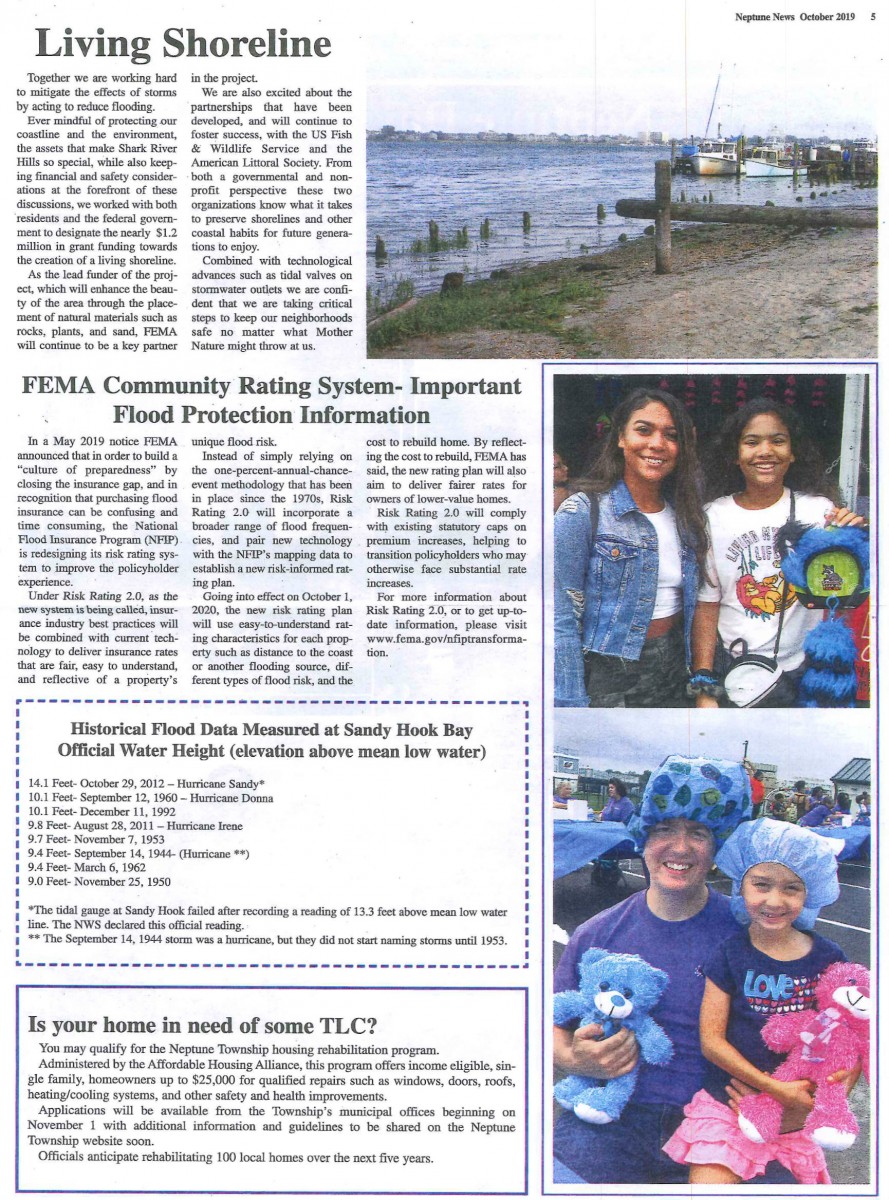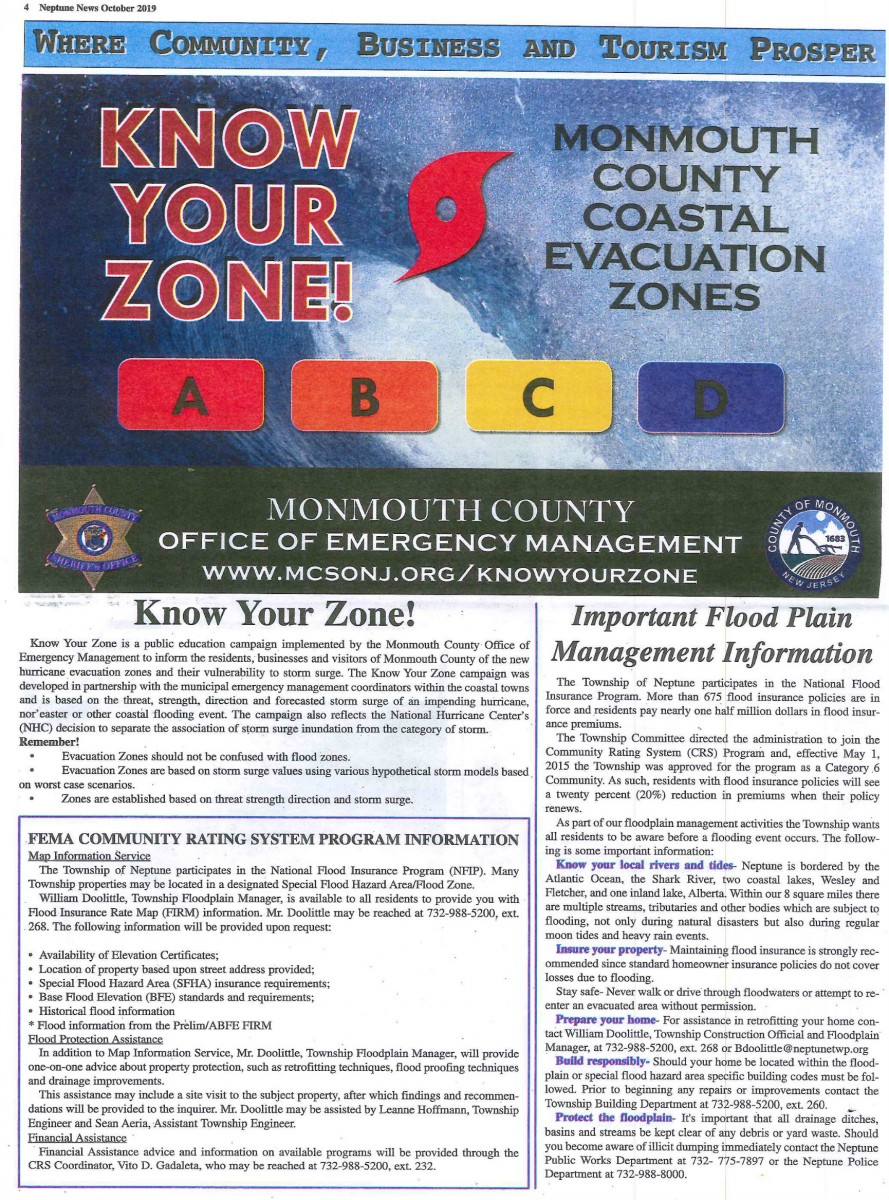Neptune Township CRS Coordinator
Don Clare, CFM.
Director of Code and Construction
Construction Official - Electrical Subcode
CRS Coordinator - Floodplain Manager
View Property Information and Flood Elevations.
**NOTE** All flood elevations and zones to be confirmed by the Floodplain Manager.
All formal Zones and BFE’s to be determined from the official FEMA Flood Map Service Center website.
Please CLICK HERE to view the Neptune Township Flood Damage Prevention Ordinance
FEMA Technical Bulletins
Please CLICK HERE to view
Helpful Links
For Additional Map Data please click the link below to access the Monmouth County “Self-Service WebApp”.
This site provides flood information and allows Neptune Township to receive valuable CRS credit for CRS Activity 440.
https://www.visitmonmouth.com/page.aspx?Id=4382
Click here to visit the Monmouth County Flood Protection Library.
http://www.monmouthcountylib.org/index.php/special-services-and-collections/fema-community-rating-system.
This link allows Neptune Township to earn valuable credit toward CRS Activity 350.
Annual Progress Report Floodplain Activities 2024
MJ-HazardMitigationPlanMonmouth County Vol_I_37_Neptune_Township 2024

Know Your Flood Hazard
Knowing your flood zone is knowing your surroundings. Your zone may consist of floodways, coastal flood hazards, rivers and streams. This basic understanding is important when purchasing a home to know if the structure is in a flood zone. Knowing you zone is being prepared should an evacuation from your community be required. Knowing your evacuation route is knowing how to get out of your area safely.
Insure you property from flood hazard
To properly insure your property in case of a flooding emergency you must prepare yourself in advance. Don’t wait until after the emergency to obtain critical insurance coverage to protect your home and contents. Speak with a flood insurance specialist today. For additional information about flood insurance and your flood zone, contact the Neptune Township floodplain administrator Don Clare, at 732-988-5200 Ext 263 or email your questions to dclare@Neptunetownship.org.Protect people from the hazard
Turn around don’t drown. Never drive or walk through flood waters. Flood waters are a powerful force capable of washing away vehicles, destroying roads, and displacing manhole covers. Flood waters can change the landscape creating hazards are beyond a person’s view.
Protect your property from the hazard
The basics of protecting your property from flood damage start with knowing your hazard and preparing. A few basic methods of protection are,
-Installing approved flood vents in foundation walls.
-Elevating equipment such as mechanicals or appurtenances.
-Dry floodproof noon-residential buildings to prevent water from entering.
-Wet floodproofing minimize damage to a structure and its contents from water that is allowed into a building. enclosures below elevated buildings, walkout-on-grade basements, below-grade basements, crawlspaces, or attached garages.
-Maintain nearby streams, ditches, and storm drains keeping them free of debris.
Build responsibly
-Obtain all required building permits before starting your project.
-Build according to your flood hazards.
-Elevate your structure and equipment to prevent damage by flood water.
-Obtain all permits for garden and storage sheds to ensure they are properly installed and secured.
Protect natural floodplain functions
-Some of the benefits of protecting and preserving natural and beneficial floodplain functions to ensure to some of these water resources.
-Natural Flood and Erosion Control
-Provide flood storage and conveyance.
-Reduce flood velocities.
-Reduce peak flows.
-Reduce sedimentation.
Hurricane and severe storm preparedness
Neptune Township provides assorted weather-related warning such as hurricane, snow fall, extreme temperatures, and other important notifications to the community to ensure this critical information is provided in advance of weather-related events. These are some of the methods and messages used.
- Free subscription based Nixle, by Everbridge keeps subscribers aware of all Township notices. These notices are customizable and relevant to the subscribers needs.
- Jersey Central Power and Light, A First Energy Company provides multiple ways to communicate during power outages.
- Call 1-888-Lightss (544-4877)
- Text by registering via test to 544487 (LIGHTS). You will need an account number to register.
- Visit JCP&L online at www.jcp-L.com. Register in advance.
- JCP&L is on Facebook www.facebook.com/jcpandL.
- Twitter, www.twitter.com/jcp_L.
Know your zone evacuation routes
Flood Warning Systems
Flood Hazard and Evacuation Maps
Flood Safety Precautions
Shelter Locations (including Special-Needs Shelters)
NJ Coastal Coalition
Historical Flood Related Information
Information needed to write a flood insurance policy
Assistance reading flood maps, by providing your address.
Get on our Floodplain Contact list
Important Topics
The Department of Community Affairs wants you to know that, protection and assistance programs are available.
Don’t wait until it’s too late
Funding is available for your home repairs.
Click Here for more information
FEMA Flood Insurance RISK 2.0
Risk Rating 2.0: Equity in Action
Risk Rating 2.0: State Profiles
Risk Rating 2.0: Projected Premium changes by Zip Code
Floodplain Development Permit
CLICK HERE
“PUBLIC-PRIVATE PARTNERSHIP AIMS TO SHORE UP ERODED SECTION OF NEPTUNE’S SHARK RIVER ISLAND”
CLICK HERE to read the complete article
Six Ways to Protect Your Home From Flooding


Historical Flood Data - Measured at Sandy Hook Bay
Official Water Height (elevation above mean low water)
14.1 Feet - October 29, 2012 - Hurricane Sandy*
10.1 Feet - September 12, 1960 - Hurricane Donna
10.1 Feet - December 11, 1992
9.8 Feet - August 28, 2011 - Hurricane Irene
9.7 Feet - November 7, 1953
9.4 Feet - September 14, 1944 - (Hurricane**)
9.4 Feet - March 6, 1962
9.0 Feet - November 25, 1950
* The tidal gauge at Sandy Hook failed after recording a reading of 13.3 feet above mean low water. The NWS declared this official reading.
** The September 14, 1944 storm was a hurricane, but they did not start naming storms until 1953.
FEMA P-942 can now be accessed and downloaded for free from the FEMA Library at http://www.fema.gov/media-
Should you have any questions or comments related to the Hurricane Sandy MAT Report, please contact John Ingargiola of the Building Science Branch (john.ingargiola@fema.dhs.gov) or the Building Science Helpline (866)- 927-2104 orFEMA-Buildingsciencehelp@fema.
Please visit the Building Science Branch homepage for additional multi-hazard mitigation information and resources. Be sure to also visit Hurricane Sandy – Building Science Activities & Resources.
